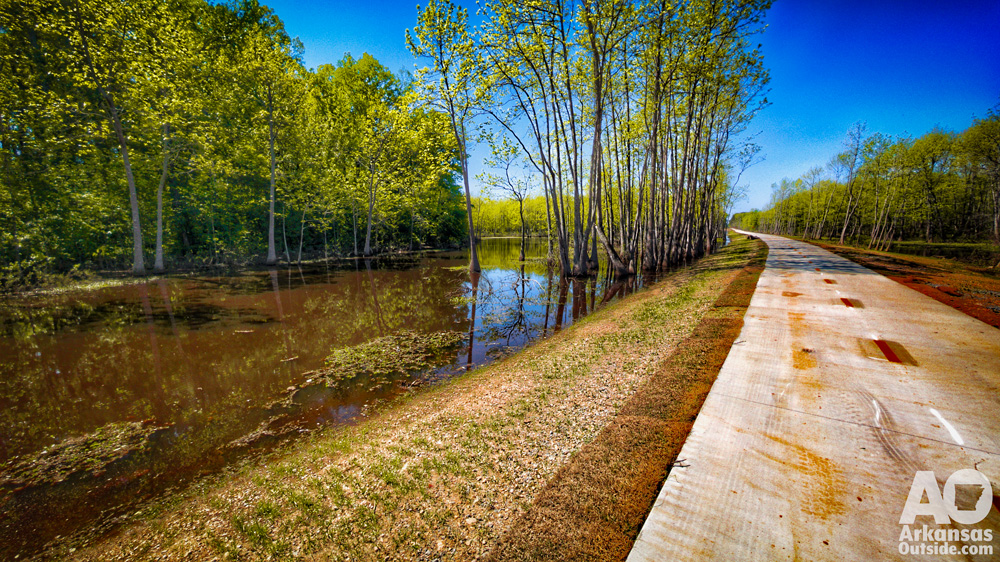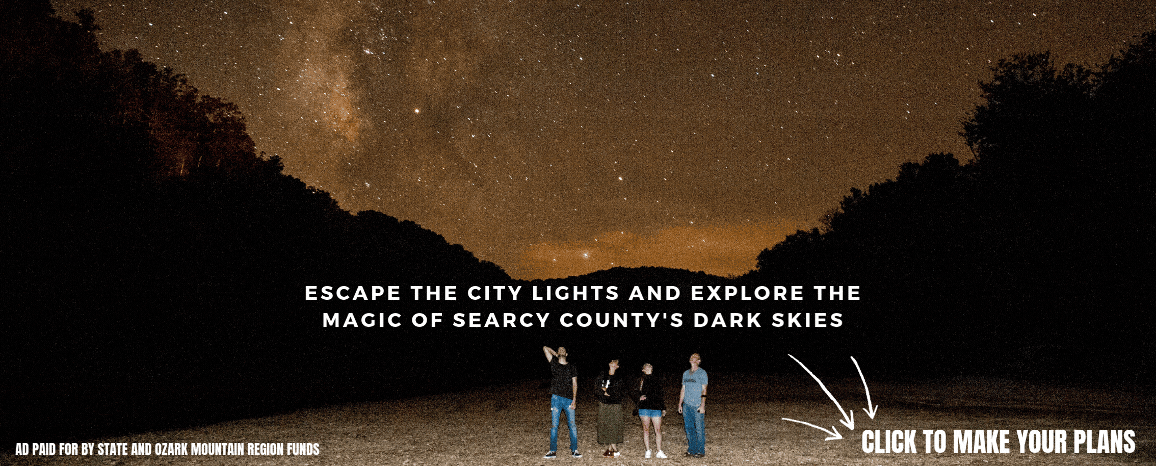LITTLE ROCK, Ark. — The 2025 PeopleForBikes City Ratings, a global benchmark for bikeability, ranks 22 Arkansas cities based on their bicycle infrastructure and network connectivity. Northwest Arkansas continues to lead, with Fayetteville becoming the first city in the state to surpass the 50-point mark on the 100-point scale. Meanwhile, most other cities in Arkansas remain far behind, highlighting the disparity in bike access across the state. Here’s a breakdown of how each city performed, highlighting its strengths and areas for improvement.
How Cities Are Rated
PeopleForBikes uses its Bicycle Network Analysis (BNA) software each summer to generate City Ratings, providing a numeric score from 0 to 100 that reflects how well a city’s bike network connects people of all ages and abilities to everyday destinations. A city’s score is based on six core factors—abbreviated SPRINT—covering **Safe Speeds** (calming traffic), **Protected Bike Lanes**, **Reallocated Space** (dedicated lanes), **Intersection Treatments** (for safe crossings), **Network Connections**, and **Trusted Data** (accurate mapping). A score below 20 suggests a weak or fragmented network, while a score above 80 means most residents can reach common destinations comfortably by bike.
The BNA model evaluates both the presence and quality of bikeways as well as how effectively they link homes with jobs, schools, parks, and shops. It analyzes street and path data, assigning higher weight to protected facilities and well‑designed crossings. Rather than relying on city self‑reporting, the BNA uses trusted geographic information systems (GIS) data to ensure consistency across 500+ U.S. cities. This approach offers policymakers, advocates and planners clear, comparable benchmarks for improving bike infrastructure .
Fayetteville: A Model for the State
Fayetteville, now scoring 51.5, tops the state rankings thanks to continued investment in trails, traffic calming, and bike education. While recreational and retail access is strong, gaps remain in reaching essential services. Expanding protected bike routes and improving intersection safety will help sustain the city’s upward trajectory. (Read about how Fayetteville has been improving bicycle infrastructure in our recent article)
Bentonville: Trail Paradise Needs Everyday Access
With a score of 45.8, Bentonville remains a recreational biking hub. The city excels in trail access and downtown connectivity but lacks on-street infrastructure and integration with public transit. Extending protected lanes and linking residential areas to schools and shops could boost its score past the 50-point threshold.
Bella Vista: Strong Trails, Weak Services
Bella Vista scored 43.7, with its Back 40 and Little Sugar trail networks supporting a high recreation rating. However, access to grocery stores, schools and healthcare remains limited. Addressing gaps along high-speed roads and linking to regional destinations will improve its practicality for daily cycling.
Rogers: On the Rise
Rogers reached a high of 38.2, up from under 20 in 2018. The Razorback Greenway and local trails connect many neighborhoods and retail areas, but commercial corridors and suburban developments need safer access. East-west routes and better crossings on busy roads are key next steps.
Springdale: Central, but Disconnected
Springdale scored 34.5, boosted by the Razorback Greenway. Still, many neighborhoods lack access to jobs and schools due to barriers like I-49 and Highway 412. The city should prioritize overpasses, side paths, and routes to schools to better serve all residents.
Conway: Rebounding From a Low Point
Conway improved to 25.9 from a low of 7.1 in 2020. Tucker Creek Trail and compact geography offer promise, but major roads still divide the city. A network linking the university, downtown, and schools, supported by traffic calming, would strengthen the system.
Maumelle: Newcomer With Potential
Maumelle holds steady at 19.5. Park trails and calm neighborhoods are positives, but major roads lack bike lanes. A connection to the Arkansas River Trail and better internal links could help elevate the city’s status.
Searcy: Slowly Gaining Ground
Scoring 17.3, Searcy has made gradual progress since 2023. Residential streets and a growing advocacy base show promise, but high-speed roads and lack of protected infrastructure hinder safe daily cycling.
Siloam Springs: Slow Recovery
After a sharp drop from 2018, Siloam Springs inched up to 16.0. Dogwood Springs Trail offers scenic rides, but major corridors remain risky. Expanding the trail and calming traffic could aid further recovery.
Heber Springs: A Baseline Year
Debuting at 13.4, Heber Springs offers quiet streets and recreational paths, but lacks a comprehensive bike network. Initial steps like mapping routes, building a path to the lake, and improving street crossings are needed.
Little Rock: A Capital Challenge
Once scoring over 20, Little Rock now sits at 12.0. The Arkansas River Trail and downtown improvements are offset by citywide gaps, high-speed arterials, and low equity in infrastructure. A Complete Streets approach and strategic connections to the River Trail could help reverse the decline.
Jonesboro: A Campus Island
Jonesboro, at 11.0, has recreational assets and a major university but lacks safe connections across town. Focused routes from ASU to downtown and Craighead Forest Park, plus protected infrastructure, are needed.
De Queen: Rural Start, Room to Grow
De Queen repeats its score of 10.9. As a small town, low traffic could support biking, but no dedicated facilities exist. Simple bike boulevards and path conversions could build momentum.
Centerton: Bedroom Community at a Crossroads
At 10.8, Centerton remains near the bottom. With proximity to Bentonville, it could benefit from regional trail extensions. Internal paths and planning for future growth are essential.
Monticello: Slight Decline, Still Low
Monticello scored 10.5, down from 12.0 in 2023. It has a university and manageable distances, but fast roads and minimal infrastructure limit usefulness. Linking the UAM campus with town and schools would help.
Hot Springs: Tourism vs. Transportation
At 9.0, Hot Springs has a developing greenway and a bikeable downtown. However, arterial roads and gaps keep most residents from using bikes daily. Expanding the Greenway and connecting neighborhoods are priorities.
Russellville: Stalled at 8.3
Russellville has seen little change since joining the list in 2023. Trails near parks and a university present opportunities, but high-traffic corridors remain obstacles. Connecting downtown, Arkansas Tech, and the riverfront is key.
Mountain Home: Once Mid-Pack, Now Near Bottom
Mountain Home dropped from 16.3 in 2018 to 8.3 today. Quiet residential areas remain, but Highway 62 and others are major barriers. Identifying parallel calm routes and linking parks and schools could improve the score.
North Little Rock: Decline With Bright Spots
North Little Rock fell from 20.1 in 2018 to 8.2 today. The River Trail and Argenta are assets, but most neighborhoods are cut off from safe routes. Reviving its early momentum will require systemic investment.
Fort Smith: New But Lagging
Joining in 2025 with a 7.4 score, Fort Smith shows little infrastructure despite size. Priorities include connecting the university and historic downtown, and leveraging trails near the riverfront.
Pine Bluff: Late Entry, Low Score
Pine Bluff debuted with a score of 6.8. Despite a grid layout and potential for short trips, fast traffic and minimal facilities make biking difficult. Safe crossings and basic infrastructure would improve safety.
Marianna: Small Town, Big Challenges
Marianna enters the ratings at 5.3, the lowest among Arkansas cities. As a rural Delta town, it has few facilities. Pilot programs for Safe Routes to School and small greenways could begin to address the gap.
Looking Ahead
Arkansas cities vary widely in their support for cycling. Northwest Arkansas leads by example, but much of the state remains car-dominated. With targeted investments, community engagement, and policy support, cities across Arkansas have opportunities to build safer, more connected biking networks that support public health, mobility, and economic vitality.

For a more detailed report, go to the city rating page and filter the list by state. If your town is not on the list and you’d like to see it scored next year go here.
This article was originally published on ArkansasOutside.com, your trusted source for outdoor news and updates in The Natural State. Unless otherwise credited, all photos included in this piece are the property of Arkansas Outside, LLC. We take pride in sharing the beauty and adventures of Arkansas through our lens—thank you for supporting our work!





